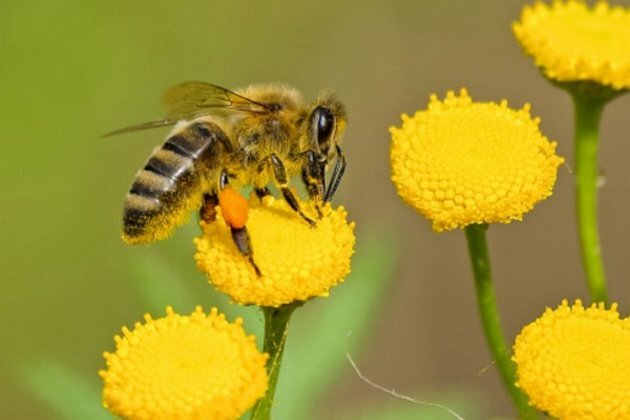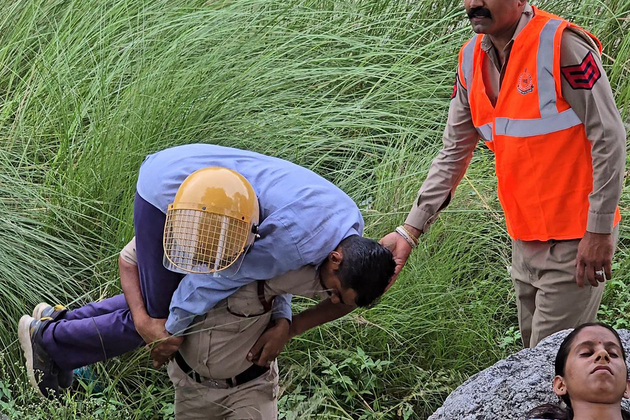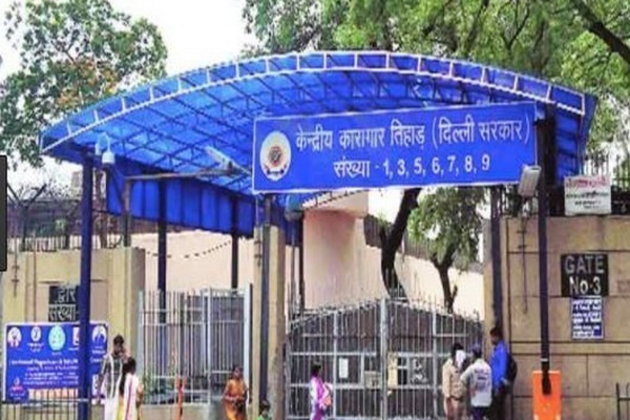Research: DNA contained in honey reveals honeybee health
ANI
23 May 2022, 18:07 GMT+10

Vari (Athens) [Greece], May 23 (ANI): Researchers from Greece's B.S.R.C. 'Alexander Fleming' have optimized a method for characterizing DNA traces in honey, revealing the species with which honeybees interact.
The findings of the research were published in the journal 'Molecular Ecology Resources'.
This collaborative work led by researcher Dr Solenn Patalano allowed the monitoring of the variability of bee diets across the year, revealing bee microbiota in a non-invasive way, as well as identifying pathogenic species they are confronted by.
Why understanding the honeybee's ecological niche is important?What defines an organism's ecological niche is a delicate balance of interactions and adjustments to other species coexisting within the same habitat. By pollinating trees and flowers, honeybees exploit a large number of flowering plant species for their own food resources and growth.
On the other hand, honeybee colonies are also weakened when environmental conditions favour the propagation of pathogenic species, such as Varroa mites. The species dynamics of the honeybee ecological niche are therefore inextricably linked with the type of habitat the bees live in and its seasonal changes.
Faced with the increasing restructuring of agricultural areas and the effects of climate change, bee ecological niches are becoming more vulnerable. A better understanding of the dynamics of interactions between bees and surrounding species will help to identify risk periods and zones for bees.
"This is extremely important in rural and agricultural environments, where species interactions influence the productivity of crops. It's compelling how much of our food and survival depends on the proper functioning of tiny insects!" commented Anastasios Galanis, the first author of the study.
Honey, a unique marker of environmental plant diversityHoneybees make honey by regurgitating the nectar and pollen from the flowers they forage and then placing it in the cells of their hive until enough water evaporates. Through this process, honey comes into contact with a variety of organisms and, therefore, contains DNA from multiple species, collectively called environmental DNA (eDNA); this originates from foraged plants, the gut bacteria of bees, and potential hive pathogens.
The now published, optimised method called 'direct-shotgun metagenomics', involves sequencing and comprehensive identification of the DNA fragments found in honey. As explained by Galanis: "The design and testing of a bioinformatic pipeline tuned for honey metagenomic data allow us to increase sensitivity and specificity; thus, we can be quite confident about the identification of certain species".
In this study, researchers analysed several samples of honey from an apiary located in a typical Mediterranean landscape. They identified more than 40 species of plants that reflect all the botanical diversity surrounding the hives. "What was very striking", said Dr Patalano, "is to see how variable the abundance of plant eDNA is over the seasons, reflecting perfectly the behavioural foraging adaptations that follow plant flowering."Researchers also compared the different samples of honey by the use of melissopalinology (using the shape of pollen grains for characterization). Beyond the great complementarity of the two analyses, the study revealed that the metagenomic approach also reveals non-pollen foraging behaviour, such as the foraging of pine honeydew, an important food resource for the survival of bees in early autumn.
Anticipating disease and spread of pathogensContrary to what one might think, the ecological niche of bees extends well beyond plants. In the analysed honey samples, the researchers revealed an even greater number of bacterial DNA species, the vast majority of which emanates from microorganisms considered to be harmless and which comprise the core species of the bee microbiome.
Dr Patalano explains: "As the human gut microbiome, the gut microbiome of the bee is an important element of their health. We already know that environmental stressors, such as pesticides, can seriously damage gut microbial communities and increase the risk of bee diseases. But how this works remains largely unknown." With this work, the researchers provide evidence that the honey metagenomics approach allows the study of gut microbiome variation without the need of sacrificing the bees.
Researchers also looked for the presence of DNA from putative pathogens. They found that traces of Varroa mite eDNA in honey directly matched with observed hive contamination. It is a promising sign that this research could eventually be used to monitor and anticipate disease and pathogens in large scale studies.
"In the future, this work might also have very important implications for humans. If we want to ensure ecosystem services, such as fruit and vegetable pollination, while maintaining species biodiversity, we also need to safeguard bee health. Our challenge is to build biomonitoring strategies in order to identify the fittest ecological niches for all pollinators", concluded Dr Patalano. (ANI) Share
Share
 Tweet
Tweet
 Share
Share
 Flip
Flip
 Email
Email
Watch latest videos
Subscribe and Follow
Get a daily dose of Greek Herald news through our daily email, its complimentary and keeps you fully up to date with world and business news as well.
News RELEASES
Publish news of your business, community or sports group, personnel appointments, major event and more by submitting a news release to Greek Herald.
More InformationInternational Business
SectionMumbai court allows restoration of attached property worth Rs 952 Crore of Vadraj Cementt
New Delhi [India], June 29 (ANI): In a significant development in the IL&FS case, assets worth Rs 952 crore, which were attached by...
Chennai Airport conducts mock drill to test emergency response
Chennai (Tamil Nadu) [India], June 28 (ANI): The Airports Authority of India (AAI) conducted a mock drill at Chennai International...
Himachal: Kangra airport conducts full-scale emergency mock drill to test disaster preparedness
Kangra (Himachal Pradesh) [India], June 28 (ANI): A full-scale emergency mock exercise was successfully conducted at Kangra Airport...
Union Minister G Kishan Reddy reaffirms Centre's full support for Mineral and Coal sector growth in North East
Guwahati (Assam) [India], June 28 (ANI): Union Minister for Coal and Mines G Kishan Reddy reaffirmed the Government's full support...
He built Americas helicopter. But he dreamed only of Russia.
From the bombers of the Empire to helicopters for the Pentagon Igor Sikorskys machines were always Russian at heart In a makeshift...
Forum highlights regional growth, attracts global partners in Xizang
LHASA, June 28 (Xinhua) -- International business leaders gathered at a forum in southwest China's Xizang Autonomous Region this week,...
Mediterranean
SectionAlliance eyes major military buildup to counter Russia
THE HAGUE, Netherlands: NATO is pressing ahead with a sweeping new defense spending target, calling on all 32 member nations to commit...
US reacts to calls for execution of IAEA chief
Secretary of State Marco Rubio slams reported threats against Rafael Grossi in Iranian media US Secretary of State Marco Rubio has...
Israel expresses deep concern over inflammatory, hateful rhetoric at Glastonbury Festival in UK
London [UK], June 29 (ANI): The Embassy of Israel in the United Kingdom on Saturday expressed deep concern over inflammatory and hateful...
Iran-Israel Conflict: US objectives are far more than what meets the eye, says West Asia analyst
By Kavya Dubey New Delhi [India], June 29 (ANI): The world paused on June 13 when Israel targeted major military and nuclear facilities,...
IDF claims to have killed Hamas mastermind behind October 2023 attack
Tel Aviv [Israel], June 29 (ANI): The Israel Defense Forces has announced that they eliminated Hakham Muhammad Issa Al-Issa--one of...
"Was admitted due to health issues": Tihar officials after ISIS-linked terror accused Saquib Nachan dies
New Delhi [India], June 29 (ANI): Saquib Nachan, a convicted terrorist linked to the Islamic State (ISIS), died at Safdarjung Hospital...













